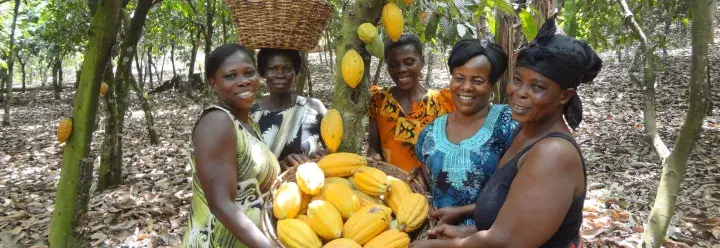Momentum around living wages is growing. Businesses, governments, and civil society are increasingly recognising the wealth of benefits to workers, businesses and society. They are making commitments and calling for legislation to tackle the issue of low and poverty wages in supply chains across the world.
As market-based tools, sustainability standards and similar systems are at the forefront of this movement in many sectors. It is essential that their wage strategies and approaches consider gender so that their ambitious goals can be achieved.
There are many factors that cause women to be more vulnerable in value chains. Women generally have less access than men to employment, productive resources, information and support, credit, education, and trade union representation. Women are also more likely to be in part-time, temporary, or informal work.
These imbalances mean women are more exposed to exploitation and discrimination, and they have been more vulnerable to COVID-19 related economic effects. Some of the sectors hardest hit by the pandemic are those with large female workforces, such as tourism, travel, care giving, manufacturing and food services. Many of which are characterised by low pay and poor working conditions that lack basic worker protections like paid sick and family leave.
One of the biggest problems at the intersection of gender and wages is gender pay gaps. They are a known and growing challenge globally, with women earning about 20 percent less than men. Research shows that the economic effects of the pandemic across sectors have widened gender pay gaps and made working conditions for women workers more precarious. Improving wages, by ensuring minimum wages are met or working towards a living wage, is key to reducing pay gaps and discrimination for lower paid workers.
Sustainability systems have been at the forefront of efforts on living wages. They can play a positive and constructive role in making living wage strategies more effective. Many schemes are also increasing their aspirations and actions around gender-related issues. So, what can be done about gender and wages?
First, schemes need to collect the right data to expose key gender inequities. Gender disaggregated data is critical. This requires developing a comprehensive list of gender indicators and data needed to holistically assess gender inequities at the workplace and supply chain level. For example, to respond to the gender wage gap, schemes need to capture wages by job category and the gendered split within that job category across all certified entities.
More research and funding are needed for studies that provide methodologies for understanding gender pay gaps in value chains. These should build on the guidelines developed by the Anker Research Institute and Global Living Wage Coalition in June 2021.
Also, dialogue and convening on the topic of gender and wages help to build alignment and create opportunities for schemes to explore ways to accurately and reliably measure wages, such as through the Wage Measurement and Auditing Working Group. We need to put gender on the table in all spaces where we are discussing living wage to better understand trends and wage gaps.
Understanding the intersections between gender and wages is an area with great potential for sustainability systems to explore and build on current activities and initiatives. If we are going to improve worker wages and ensure a living wage, we must consider gender and not leave women behind.



